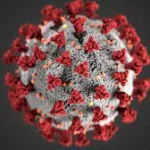
A study has uncovered a correlation between an increased risk of dementia and shorter telomeres located at the ends of white blood cell chromosomes. These findings were reported in the online journal General Psychiatry. The researchers suggest that this association is linked to diminished total and white matter, which plays a crucial role in information processing and could serve as an indicator of future brain health. Telomeres, resembling caps on shoelaces, serve the purpose of safeguarding chromosomes from fraying or unraveling during replication.
The study delved into potential connections between telomere length in leukocytes and the risk of dementia, encompassing Alzheimer’s disease and vascular dementia. It also examined total and regional brain volumes, utilizing data sourced from the UK Biobank. This colossal biomedical database houses extensive genetic and health records for approximately 500,000 individuals in the United Kingdom, registered between 2006 and 2010.
The length of leukocyte telomeres was established by analyzing blood samples taken at the time of enrollment. This data was available for 439,961 individuals, aged between 37 and 73, with an average age of 56. The analysis uncovered a substantial link between leukocyte telomere length and dementia risk. Participants with the shortest telomeres were 14% more likely to receive a dementia diagnosis, and 28% more likely to be diagnosed with Alzheimer’s disease, even after accounting for gender and age. While not statistically significant, there was an 18% increase in the risk of vascular dementia.
In 2014, 38,740 individuals underwent complete body MRI scans to visualize their brain anatomy. This revealed a direct relationship between shorter telomeres in leukocytes and a reduction in overall brain volume, white matter, and specific brain regions such as the hippocampus (involved in learning and memory), the thalamus (a sensory processing center), and the nucleus accumbens (the ‘pleasure center’).
Since this is an observational study, it cannot establish causation. The researchers acknowledge several limitations, including the fact that telomere length was only assessed once, making it impossible to determine if changes over time increased the risk of dementia. Additionally, telomere length was exclusively measured in leukocytes. The researchers speculate that measuring telomere length in glial cells (non-neuronal cells in the central nervous system) could have provided more insightful data, but this information wasn’t available from the UK Biobank. Furthermore, dementia diagnoses were sourced solely from electronic health records, which may or may not have been up-to-date and might not have included milder forms of the condition. Nevertheless, the researchers conclude that “leukocyte telomere length acts as an aging biomarker associated with the risk of dementia. Furthermore, we also observed linear associations of leukocyte telomere length with total and regional brain structure. These findings highlight telomere length as a potential biomarker of brain health.”











